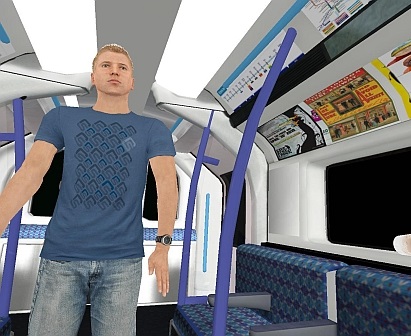Virtual reality has been used to help treat severe paranoia.
Patients who suffered persecutory delusions were encouraged to step into a computer-generated Underground train carriage and a lift, according to BBC.
The simulations allowed the study’s 30 patients to learn social situations they feared were actually safe.
The rest of the patients were encouraged to lower their defences and try to learn they were safe by approaching computer characters (avatars) and standing toe-to-toe or staring at them.
‘Paranoia melts away’
This group, who fully tested out their fears, showed the biggest reduction in their paranoid delusions. More than half of them no longer had severe paranoia at the end of the testing day.
The first group, who used their defences, also saw some reduction in the level of severe paranoia.
The study was led by Prof Daniel Freeman, a clinical psychologist at Oxford University’s Department of Psychiatry. He told me: “At the heart of paranoia is the unfounded belief that people are under threat.
“With virtual reality we can help the person to re-learn that they are safe, and when they do that, the paranoia melts away.”
The Oxford team estimate that around 1-2% of the population have severe paranoia at some point in their lives, typically associated with a mental health disorder such as schizophrenia.
Patients have such a strong sense of mistrust that they avoid contact with people and may rarely leave home.
The study was small and the patients had just one half-hour session of virtual reality with no long-term follow-up. However, Prof Freeman said the results were “exceptionally good”.
He added: “I think this a glimpse into the future of mental healthcare. There is a revolution underway in virtual reality with many headsets becoming available.
“As these become more affordable we will see them used not just in clinical settings, but in people’s homes.”
H.Z

